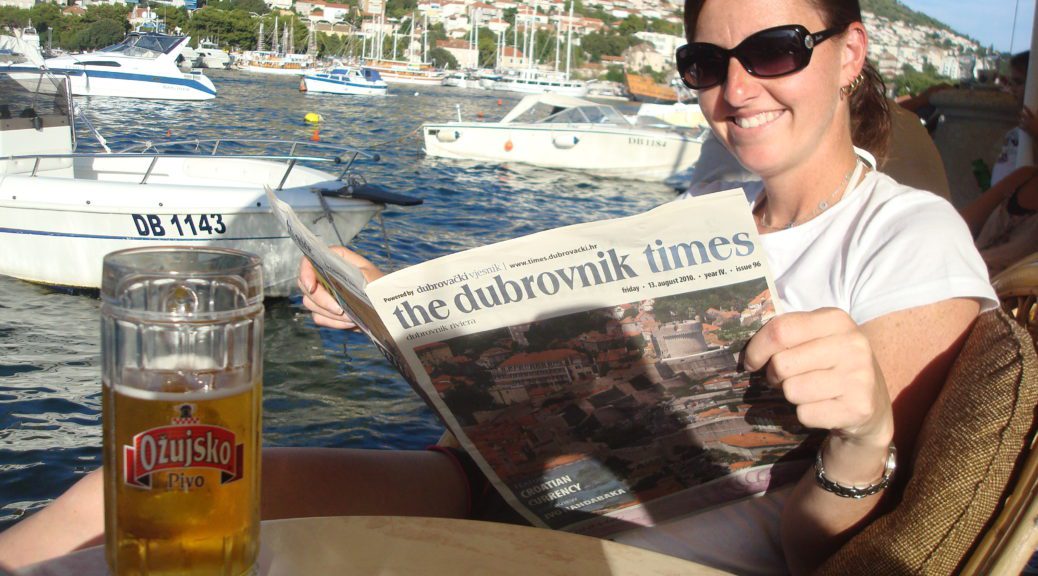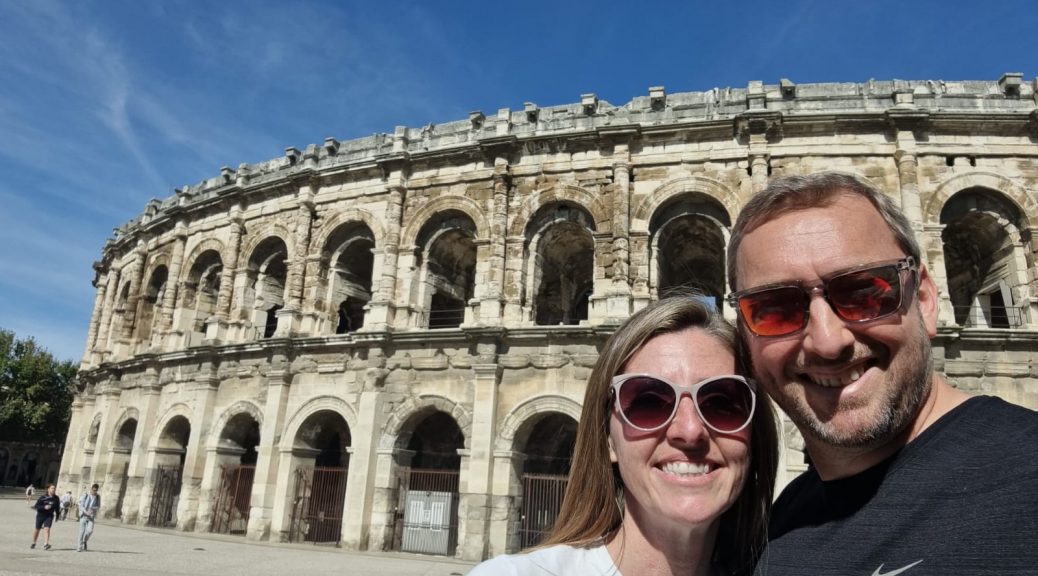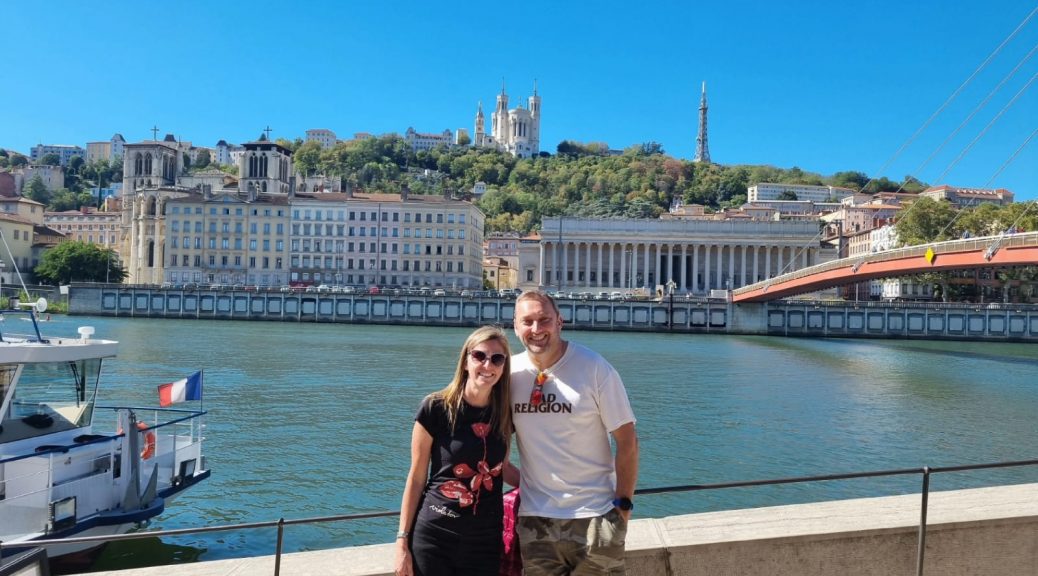LIMASSOL
13 – 16 April 2024
We had the main event of our trip right at the end. Said event was a half marathon, so it was a touch counter-intuitive after all the feasting and festivities in the warm-up fortnight.
That said, Saturday’s tasks were to get from Paphos to Limassol (where the race would be held the next morning), get our race packs and try stay off our feet and as well rested as a holiday weekend would allow.
Luke and I did a morning jog along the Paphos promenade as a warm-up in the and to get a photo of the Castle at the end of the Port that had proved elusive in our sightseeing. Alex and Chris went on a different, but equally important, mission to Starbucks to sort out their caffeine fix and to the supermarket to get bread, cheese and ham to make toasties… which Alex was already busy doing when I arrived home.
Very sorry to say goodbye to our fantastic holiday house, we set off to explore new places.
Chris had planned our route to take us past Aphrodite’s Rock and through the town of Pissouri. Snaking and climbing through the narrow streets of the latter got us to a viewing point that offered a spectacular panoramic view of the coastline below.
It was a bit of a culture-shock pulling in to Limassol, which was by far the biggest city we’d seen on our travels. Cresting a hill on the outskirts revealed a sprawl of buildings hugging the coast as far as the eye could see. With a population of 154000 compared to Paphos’s 35000, it certainly felt like we’d arrived in the big smoke (although still nothing compared to Johannesburg’s 6 million!)
We had chosen our apartment for its location, an easy walking distance from the Limassol Marathon start line in Molos Park.
It took some doing to find the building in the narrow streets and one-way roads that satellited from the main road that ran alongside the promenade and that housed our entrance. Once we’d honed in on it, finding parking was another story!
We needed to go get our race numbers anyway, so did a very quick bag drop-off and kept moving.
Who should we bump into at the ticket office? The entire UK contingent (Alex and Luke’s Bootcamp buddies) who had also come to collect their tickets. We’d told Chusa and Lee we would wait for them (they had come from Paphos on the bus), so the whole extended group made ourselves comfy in the lounge area under the marquee to be the welcoming committee and got group photos to commemorate the occasion.
We decided on a late lunch at the marina, so dropped off Chusa and Lee at their apartment (about 800m from ours) and then succumbed to a paid parkade a couple of blocks inland from us so we knew our car would be safe – and accessible the next day if we needed it since our area would all be blocked off for the race.
Once our party was reunited, we walked along the promenade to the marina. Chusa and Lee had been to Limassol 6 years prior (also for the marathon) so had a traditional taverna in mind.
We were marginally waylaid as we encountered the Colchester Boot camp crew, who had established Drink Camp on the terraced steps at Ventuno Aperitivo on the Square at the Old Port. Katie had commandeered a hobby-horse of sorts and was cantering up and down in front of her jeering buddies. We checked in briefly, before making a concerted effort towards lunch.
Time had only done Kipriakon taverna proud and we all committed to the traditional menu, with Moussaka (aubergine bake), Pasticio (oven-baked pork and bechamel pasta), and Tsavas (lamb and onion stew) being the order of the day.
We had told the Boot Camp crowd that we would meet them after our meal, but since we had languished somewhat, they were already gone when we passed back through the square.
Either Limassol is a small world, we were predictable or fate intervened, but we still ended up passing them en route back to our neck of the woods… Where we had already set our sights on an Irish bar called Rums Pub, so we passed pleasantries as each headed in the opposite direction.
With a big race the next day, we took it very easy and nursed a Guinness to within an inch of its life while chatting with our mates. We also didn’t want a heavy meal or a long night in a restaurant to contend with, so Alex made the suggestion that we ‘carbo-load’ with 2-minute noodles at our apartment, which was pure genius!
So much for being ‘off our feet’; we had almost 20,000 steps clocked!
SUNDAY
And then it was Race Day!
We were up at the (relative) crack of dawn, each observing our own prep protocol. Then it was off to the Cafe Nero across the road to meet our race buddies and walk slowly and gently to the start line.
I took my place in Block 1, waiting for the starting gun… BANG! We were off.
Left, right, left, right, look at the scenery, grab a water bottle, left, right, left, right. It was a long 21km! With sea-level air and a flat there-and-back course on our side, both Chris and I set a Personal Best on the course. Hooray!
Since some of the Colchester Boot Camp squad had run the 10km and finished before us, it was fabulous to have a welcome committee at the finish line to cheer us in. They were a spirited crew, so even though we had only known each other for a matter of hours, they cheered like we were old friends.
Once our group had gathered, we took time to return to our apartment (since it was so conveniently across the road) for a toilet stop, shower and change, and then it was off to lunch.
Everywhere was busy. There were still runners on the field so the roads were still closed and the promenade blocked off for participants approaching the finish line. A band had struck up on the Old Port Square, and a crowd was starting to gather with jubilant finishers celebrating their achievements.
We scored because the Boot Camp crew had once again assumed the position on the same terraced steps we had met them on the day before. With the size of their group, we were easily able to pull up chairs, share war stories about our race and commiserate about the tricky bits on the course.
Hunger will out though, and we had to leave our thirsty friends behind in order to refuel our very-empty tanks.
Being Sunday and with all the extra race traffic, the lunch sitting was full to bursting along the whole marina. We were very lucky to catch the eye of the host at the same spot we had lunched the previous day and he made a plan to bring an extra table into play for us. It meant that we had half of us in the sun and half enjoying the shade at any point – and we tried to circulate so nobody got too fried.
With a second go at the all-round-tempting menu, we were able to sample the halloumi ravioli, calamari and the biggest pork chop you have ever seen! It reached from end-to-end on my rectangular plate, gently cupping my chips and sauce above its shiny smile shape.
The service wasn’t great because the restaurant was so busy so we were there much longer than planned. And really needed to get a bit of a walk-around in before our tired legs seized and said that they could not!
Moving inland, we did an explore of the Old Town. There was a medieval castle surrounded by cafes, bars and restaurants that we probably should have lunched in, had we had the energy for risk-taking on our earlier forage.
Always game, the troops found space for an ice-cream and we soaked up the atmosphere from a park bench in the middle of the action before retreating to our respective quarters for some downtime after a very long day.
Our regroup for dinner was at the Limassol Agora food court in the original market in the Old Town. With a broad selection of street food stalls and a variety of entertainment options, it sounded like ‘something for everyone’.
However, it was very noisy and we were beyond shouting at each other to be heard, so we swiftly moved on.
I had spotted a locals souvlaki take-away that scored off the charts on Google Maps. Since it had a dine-in area attached, we figured it was worth a shot. We ordered a broad selection off the menu at Souvlaki Livadeias and ate like kings at a fraction of the cost of a high street restaurant equivalent. We vowed to try copy the roasted feta parcel on the braai when we got home!
MONDAY
There was so much pressure on our last day to live up to all the antics and adventures of the rest of the trip.
Alex and Luke had requested some beach time, to make the most of the sunshine which was not as commonplace on their side of the pond as on ours. So Chris planned a bit of a road trip that would take us to some nearby beaches with a few stops along the way and then back to one of the many lovely Limassol beaches.
The first was The Cyprus Wine Museum in Erimi. We had sampled so much local wine over the course of our trip that it seemed prudent to add the theoretical education to our practical one.
The custodian seemed surprised to have customers and scurried from her feet-on-desk position to open the entrance doors for us.
She gave us a brief running order for the tour, where she would give us an intro and overview, then orientate us to the two rooms of exhibitions, then set away an 11 minute video for us to watch before taking us to the cellar where we could taste one wine for €5 or the range for €10.
The exhibits told the story of the value of wine to Cyprus, allegedly being the birthplace of wine in the form of its sweet Commanderia variant. The wine was so envied that it made Cyprus the target of invasions by the various global-domination empire-builders across history.
The video was awful. 11 long minutes of PowerPoint presentation with slides of artefacts like clay wine pots animating in and out to grossly mismatched ominous piano music. We giggled as we tortured ourselves to complete the show so as not to insult our hostess.
Sapped of the will to wine – and since we hadn’t yet eaten – we skipped the tasting and moved on to Kourion Beach.
By now starving, we settled at a deck table at the quite-swish Chris Blue Beach restaurant to enjoy the beach view over a lovely lunch, which we then settled with some downtime on the sand and frolicking in the sea.
We had discovered on the map that there still existed two British enclaves on the island, as agreed in 1960 when Cyprus got independence. We had missed the one in Famagusta when we’d visited Nicosia, but could still get bragging rights for a flit to the UK by visiting the peninsula near Limassol.
Taking the opportunity en route back from the beach, we drove through the sovereign area. From the swathe of pylons and telecoms lines, it was clear that this base was used for surveillance. With Cyprus being so close to the Middle East, there were a couple of likely suspects of whom that might be at any given time.
We would not be getting mixed up in all of that though; we would be crossing a Salt Pan to get to the Lady’s Mile beach.
With no actual road, Chris deftly navigated between the orange cones that – we presumed – indicated the preferred route on the golden sand. The water in the salt pan was twinkling on our right, bright cyan from the shallow highly salinated water. The sea was directly in front of us, with the Limassol shoreline on the horizon. We could clearly cross-reference the landmark highrise buildings to spot (more or less) our proverbial neck of the woods.
Last tourist stop on the agenda was a visit to the blue flag beach at the far end of the Limassol promenade. We hazarded a guess that we had run close to there the previous day… but there was no way we’d manage it on foot two days in a row!
We made the most of the warm late afternoon sun lazing on towels on the soft sand and then celebrated the sunset with a sundowner on the terrace restaurant.
Our last supper choice had been an obvious one. A fabulous restaurant called Meze that we had all noticed on our way into town and that scored very highly on Google. It was also conveniently two blocks from our apartment, so an easy walk on stiff legs.
We invited Chusa and Lee – who had gone on a day tour to Nicosia – to join us, so we could swap stories about our respective adventures.
Meze was, obviously, a specialist in meze-style meals which comprise of several small dishes that are shared by the table. We were served warm pita bread with little bowls of olives, peppers, hummus, tahini, tzatziki and so on… and then more dishes with grilled lamb souvlaki and chops… and then a selection of sausages… and then crumbed and deep-fried haloumi with buttery grilled mushrooms… the food just kept coming!
By the time the waiter finally announced that he was serving the last dish – a crunchy syrupy dessert course – we thought we would burst!
Fortunately the restaurant wasn’t in any rush to push us out the door, so we had time to sip it wine and let the enormous meal settle a little. While making the most of our last Limassol memory-making moments together, giggling and happily snapping last photos.





